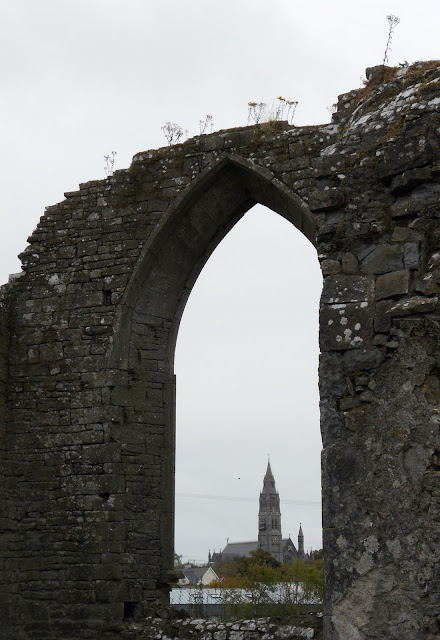This weekend was really busy, starting on Thursday which was the kick off to Guinness Live in Galway and Arthur Guinness Day. Arthur Guinness Day is in celebration of when Arthur Guinness signed a 9,000 year lease on the St. James's Gate Brewery in Dublin. He signed it in 1759 on 22nd of September and therefore at 17:59 (5:59) on the 22nd of September there was a giant celebration in the streets of Galway in honor of Arthur Guinness.

A half pint of Guinness and a portrait of Arthur Guinness
The ceiling of the Skeff, a really old and beautiful pub in Galway.
More of the interior of the Skeff
Then Friday kicked off the Galway Oyster Festival. Most of the events of the festival were pretty pricey, so I didn't go the official events, but just the fact that it was occurring gave Galway a festive air. There were street vendors and people on the main street all day playing music, all the pubs had live music every night. It was a lot of fun and my friends and I ate a plate of oysters in celebration.
Guinness Live was just a continuation of Arthur's Day for the whole weekend. It was a lot of fun, since all the pubs brought in good bands.
This is the brochure for the event.
On Saturday, I went with my schools Hiking Club to Connemara National Park which is a northwest of Galway. The landscape of Connemara was ethereal. The hills had this hazy glow to them, the writer Kate O'Brien described it best: "There is often an illusion that all is afloat, an uncertainty between hill and sky, an interchange of water and stone which the indescribably clear light seems to paradoxically exaggerate." The hiking club climbed Diamond Hill (2,385 ft.) which is just outside the town of Letterfrack. The hike was a blast, although it was very windy at the top and a little scary.
Heather
Looking out onto Ballynakill Harbour.
Diamond Hill
Hiking up to Diamond Hill
Looking out from Diamond Hill onto the Harbour again
Diamond Hill
From the top of Diamond Hill looking down onto Kylemore Abbey, which I'm going to visit next weekend or the weekend after.
Top of Diamond Hill with Emily
The Connemara landscape. It's really boggy, rocky, and peaty, but somehow still beautiful.
The way down
That's the path, lots of rock steps and boardwalks to keep you out of the boggy areas.
Diamond Hill
The little town down there is Letterfrack. We went there after the hike and had dinner at a pub.
Diamond Hill
Here is the map of the trail we took. We started on bog road and then hiked up to Upper Diamond hill walk and finished the light blue loop on the way down using the upper trail.
The Mileage
I was exhausted.

















































































